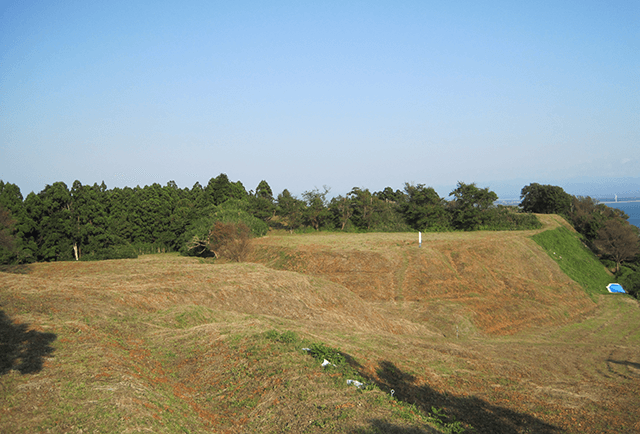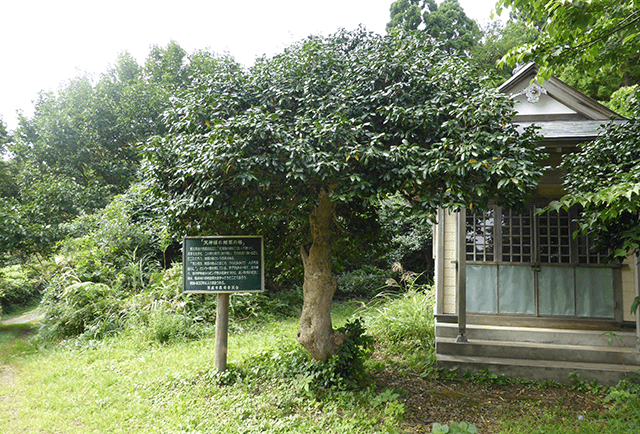-
title Cape Oibanazaki one word explanation large outcrop where you can distinctly see stratum sedimentation keywords geologydisaster preventionbeautiful confirm, register National Historic Sites conservation laws and ordinances Act on Protection of Cultural Properties 
This giant outcropping can be seen from Akita City almost 30km away, and has even appeared in elementary school science textbooks. Leaning 30° to the east, it is formed of layers of mud (light colored areas) and sand (dark colored areas). These layers were formed through a cycle of mud accumulating in deeper water, followed by sand accumulating in shallower water. It later rose out of the water, becoming land, and now stands about 100m tall. When Wakimoto Castle was built during the Warring States Period (approx. 1467-1590 CE), it made good use of this cliff’s height.
-
title Ruins of Wakimoto Castle one word explanation A base-like castle controlled by Akita under the Ando Clan keywords historylegendbeautiful confirm, register National Historic Sites conservation laws and ordinances Act on Protection of Cultural Properties 
Used as a base by the Ando Clan, who controlled the Akita region during the Warring States Period, this castle has been designated a historical landmark by the government. With a height of 100m and strategic location for both sea travel (Sea of Japan and Hachirogata Lagoon) and land travel (Tengamichi), Cape Oibanazaki was the perfect place to build a castle. During the Edo Period, it was visited by travel writer Masumi Sugae, whose drawings and record of the old camellia tree in Sugawara Shrine still remain. These are carefully preserved as an important part of the area’s cultural heritage.
-
title Tenjinsama no Hosoba no Old Camellia (The God Tenjin’s Old Camellia) one word explanation A record also left by Sugae Masumi, old camellia japonica trees keywords naturehistorysearch confirm, register Oga City Natural Monuments conservation laws and ordinances Oga City Ordinance for the Protection of Cultural Properties 
While the camellia trees on the grounds of Sugawara Shrine within the ruins of Wakimoto Castle have large, pointed leaves, the leaves on this tree are a little narrower. About 200 years ago, Masumi Sugae wrote in “Oga no Akikaze” about an old camellia tree with narrow leaves. The fact that its leaves are narrower than usual must have attracted his notice. The tree is in full bloom with pink flowers during the Sugawara Shrine festival on April 25th.
Cape Oibanazaki
Home >
What is the Oga Peninsula - Ogata Geopark? >
Geosites and spots >
south coast area >
Cape Oibanazaki

